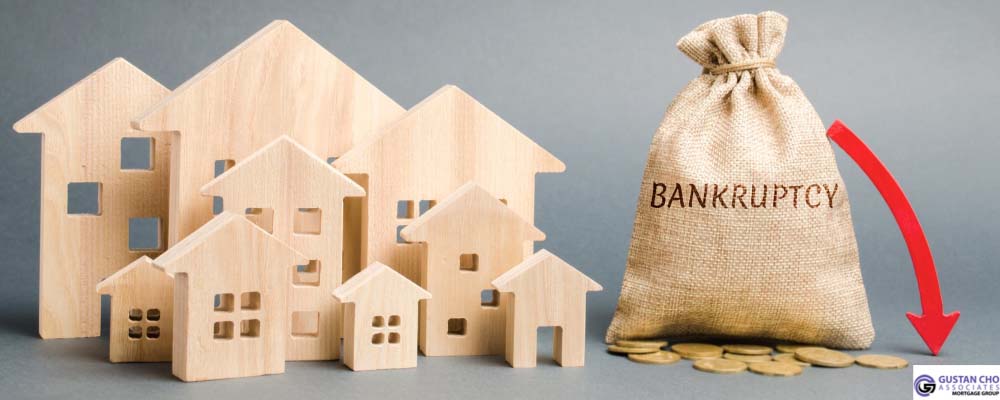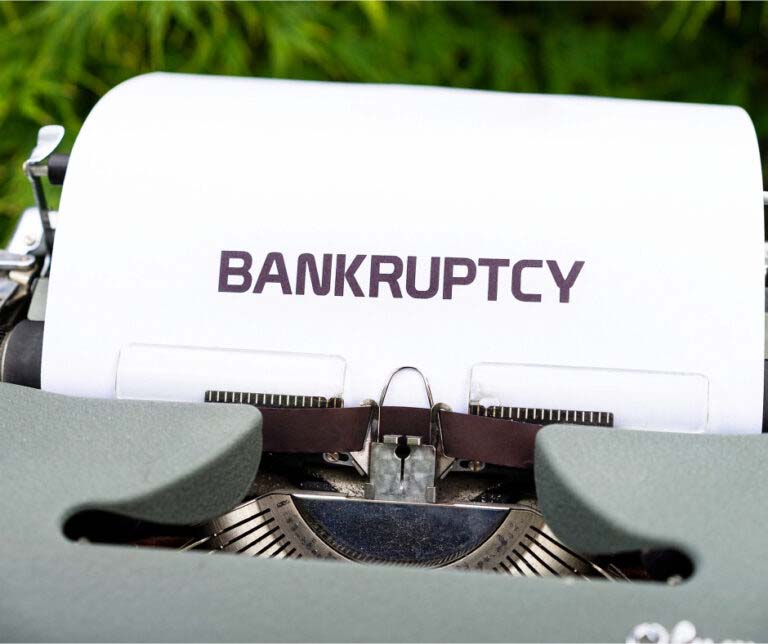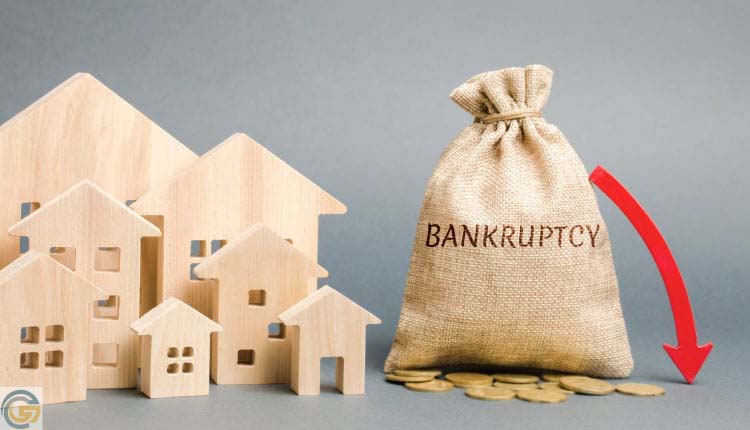Fannie Mae Guidelines on Mortgage Included In Bankruptcy
In this blog, we will discuss and cover Fannie Mae Guidelines on mortgage included in bankruptcy. Conforming Guidelines On Mortgage Included in Bankruptcy is different on Conventional Loans than it is on FHA, VA, and USDA loans. Fannie Mae and Freddie Mac have much looser mortgage lending guidelines when it comes to the recorded date of the foreclosure when it comes to the mortgage part of the bankruptcy. Qualifying for a new conventional mortgage loan after the mandatory waiting period with a prior mortgage included in bankruptcy is easier than other loan programs. With all mortgage loan programs, homebuyers can qualify for a home loan after bankruptcy and foreclosure.
Waiting Period After Bankruptcy and Foreclosure

There are mandatory waiting periods after bankruptcy and foreclosure to qualify for a mortgage loan. In this article, we will be discussing Conforming Guidelines with a prior mortgage included as part of their bankruptcy. We will discuss and cover qualifying for both conventional and FHA loans and the mandatory waiting periods for borrowers with a prior mortgage included as part of bankruptcy.
When Can I Get a Conventional Loans With Prior Mortgage Included In Bankruptcy
Fannie Mae and Freddie Mac are the two entities that govern and set standards for conforming mortgage loans, also known as conventional loans. Conventional Loans are also referred to as conforming loans because they need to conform to Fannie Mae and/or Freddie Mac Standards.
Waiting Period After Bankruptcy and Foreclosure Mortgage Guidelines
Fannie Mae Guidelines on Mortgage Included In Bankruptcy is different than other mortgage loan programs. For borrowers who had a mortgage and/or mortgages included in Chapter 7 Bankruptcy, the waiting period to qualify for a conventional loan is four years from the discharge date of Chapter 7 Bankruptcy.
As long as the mortgage and/or mortgages, if there were more than one property in the Chapter 7 Bankruptcy, were part of the Chapter 7 Bankruptcy, the four-year waiting period time clock begins from the discharge date of the Chapter 7 Bankruptcy. The mortgage cannot be reaffirmed. The foreclosure, deed in lieu of foreclosure, or short can be recorded at a later date and it does not matter with conventional loans.
HUD Guidelines on Mortgage Included in Bankruptcy on FHA Loans
For borrowers with a mortgage and/or mortgages part of Chapter 7 Bankruptcy, the mandatory waiting period to qualify for an FHA loan is three years from the date of the recorded date of the foreclosure, deed in lieu of foreclosure, and/or short sale date on the mortgage that was part of Chapter 7 Bankruptcy. Even though the mortgage was part of your Chapter 7 Bankruptcy, the discharge date of the bankruptcy does not count.
When Does The Waiting Period Start Date Begin
The waiting period clock does not start until the mortgage and/or mortgages that were included as part of your Chapter 7 Bankruptcy was transferred out of the homeowner’s name and into the name of the mortgage lender and/or the date of the sheriff’s sale. Those who have a mortgage and/or mortgages as part of their Chapter 7 Bankruptcy should be diligent after the bankruptcy discharge date to make sure that the lender gets their name out of the deed to the home.
Qualifying For Mortgage After Bankruptcy and Foreclosure

Homebuyers can now qualify for home loans after bankruptcy and foreclosure. Lenders understand that consumers can go through periods of extenuating circumstances such as the following:
- Bad credit due to unemployment
- Business loss
- Divorce
- Medical issues
Bankruptcies and Foreclosures happen to the best of all of us due to extenuating circumstances. Homeownership is possible after bankruptcy and/or foreclosure. However, most mortgage lenders do not want to see any late payments after someone has gone through bankruptcy and/or foreclosure and/or short sale. Lenders want to see re-established credit after bankruptcy and foreclosure and timely payments.
FNMA Guidelines on Mortgage Included In Bankruptcy Versus Overlays By Lenders
Homebuyers who had a mortgage part of the bankruptcy. But the foreclosure was not recorded until a much later date after the discharged date of their Chapter 7 discharged date can now qualify for a conventional loan four years from the discharged date of their Chapter 7 Bankruptcy.
FNMA Guidelines on Waiting Period After Foreclosure Start Date
Most lenders will tell borrowers that they will still go off the recorded date of the deed of the mortgage note. Or the date of the sheriff’s sale and that they need to wait 7 years from the recorded date of the foreclosure. This often happens where even though the borrower may meet all of Fannie Mae and/or Freddie Mac Lending Guidelines. But due to the mortgage lender overlays, borrowers may not qualify with all lenders.
Lender Overlays on Conventional Loans
Lenders do not need to just go off Fannie Mae and Freddie Mac lending guidelines. They can have additional lending requirements (Overlays) on top of the minimum guidelines set by Fannie Mae and Freddie Mac which are conforming mortgage overlays. Borrowers who were told that they do not qualify for a conventional loan after four years from the discharge date of Chapter 7 Bankruptcy with mortgage included in bankruptcy by the lender, look no further.
Best Mortgage Lenders After Bankruptcy With No Overlays
Contact us at Non-QM Mortgage Lenders at 800-900-8569 or text us for a faster response. Or email us at gcho@gustancho.com. Non-QM Mortgage Lenders is a mortgage company licensed in multiple states with no mortgage lender overlays on government and conventional loans. Non-QM Mortgage Lenders has no mortgage lender overlays on FHA loans. Our team of loan officers at Non-QM Mortgage Lenders is available 7 days a week, on evenings, weekends, and holidays.
FHA Versus FNMA Guidelines on Mortgage Included In Bankruptcy
In the following paragraphs, we will cover and discuss conforming guidelines on mortgage included in bankruptcy. Conventional Guidelines on Mortgage Included in Bankruptcy are very different than those of government loans. For borrowers who have a prior Chapter 7 Bankruptcy, there is a four-year waiting period to qualify for conforming loans after the discharge date of Chapter 7.
Waiting Period After Bankruptcy on Government-Backed Mortgages
For government loans, the waiting period reduces to a two-year waiting period to qualify after the Chapter 7 discharge date. Conventional Loans are called conforming loans because it needs to conform to Fannie Mae and Freddie Mac Guidelines.
FNMA Waiting Period Guidelines on Mortgage Included in Bankruptcy
Under Conventional Guidelines on Mortgage Included in Bankruptcy, the waiting period after bankruptcy starts from the discharge date of Chapter 7 Bankruptcy discharged date. Just because one has passed the waiting period after bankruptcy does not automatically qualify them for either government and/or conventional loans.
Need to get an approve/eligible per Automated Underwriting System Approval. Lenders like to see borrowers have had no late payments after the bankruptcy and/or foreclosure. AUS will also review if the borrower has re-established since the bankruptcy and/or foreclosure.
How Your Credit Gets Impacted After Bankruptcy and Foreclosure

Those folks who have recently filed for bankruptcy should start re-establishing their credit as soon as possible. A bankruptcy can drop credit scores by more than 150 FICO points. However, this is a temporary set back and credit scores will increase as the bankruptcy and/or foreclosure ages. The negative effects of bankruptcy will eventually not affect credit scores as it ages. Like Chapter 7 bankruptcy ages, credit scores will naturally go back up even without re-established credit. However, by re-establishing your credit, scores will go up much faster.
Re-Establishing Credit After Bankruptcy And Foreclosure
I have seen borrowers have credit scores of higher than 700 FICO after two years of filing bankruptcy. The best and fastest way of re-establishing credit after bankruptcy and foreclosure is by getting secured credit cards. I strongly recommend getting three to five secured credit cards with $500 credit limits. Credit Limits under $500 will have less of an impact on optimizing credit scores. Anyone can get a secured credit card. Make sure to check with the secured credit card company and to confirm that the secured credit card company reports it to all three credit reporting agencies:
- Transunion
- Equifax
- Experian
Some secured credit card companies only report to one or two credit bureaus and not all three. Make sure when getting secured credit cards to rebuild credit that they report them to all three credit bureaus.
Secured Credit Cards In Re-Establishing Credit
The reason for getting secured credit cards is not for the convenience of having credit cards. The purpose is to use it as a tool to improve credit scores. Each secured credit card should instantly boost credit scores by at least 20 points or more. As secured credit card ages, scores will also improve. Never be late on the secured card monthly payments.
How Does Secured Credit Cards Work?
Secured credit card late payments will be reported on the credit bureaus and will negatively impact credit scores. Mortgage applicants cannot be late on secured credit card payments: This will defeat the purpose of getting secured credit cards. Making late payments on the minimum secured cards will be more of a negative than not getting them.
Conventional Loan After Foreclosure

To qualify for a conventional mortgage loan after regular foreclosure the waiting period is 7 years. This waiting period of 7 years after the recorded date of foreclosure is different if the borrower had a deed in lieu of foreclosure and/or short sale. Fannie Mae and Freddie Mac have different waiting period requirements on foreclosure versus short sale and deed in lieu of foreclosure.
FNMA Guidelines on Waiting Period After Deed in Lieu and Short Sale
There is a four-year waiting period after the recorded date of deed in lieu of foreclosure and/or short sale to qualify for conforming loans. For those who have Chapter bankruptcy, FHA loans are the best route to take. Government loans (FHA, VA, USDA) have a two-year waiting period after the Chapter 7 Bankruptcy discharged date for homebuyers to qualify for their loan programs.
Mortgage Waiting Period After Housing Event
A foreclosure is when a homeowner defaults on their mortgage loan and the bank takes possession of the property. Thousands of homeowners faced foreclosures due to the economic collapse of 2008. However, there is life after foreclosure. Homebuyers can qualify to purchase a home after a foreclosure. There is a mandatory waiting period of 3 years from the recorded date of foreclosure, deed in lieu of foreclosure, and short sale to qualify for FHA and USDA loans. The U.S. Department of Veteran Affairs shortens the waiting period to two years.
When Does The Waiting Period After Foreclosure Start?
The recorded date is so important. Just because homeowners turn the keys to their lender does not mean that the deed of the home was transferred out of the homeowner’s name. The deed that has been transferred out of the homeowner’s name and into the mortgage lender’s name needs to be recorded with the county recorder’s deeds office. This recording date is what the date lenders will go by as of the starting date of the waiting period after foreclosure.
Many lenders are in no hurry of transferring names into their names on the deed of the foreclosed property. Homeowners who are currently going through a foreclosure or have recently had a foreclosure, make sure that the deed of the property is out of their name and into the lender’s name. If foreclosure went to a sheriff’s sale, the waiting period starts from the date of the sheriff’s sale.
UPDATED Conforming Guidelines on Mortgage Included in Bankruptcy
I get asked many times about having a foreclosure part of the bankruptcy. Many folks who filed for bankruptcy have the foreclosure part of a bankruptcy. For those who have foreclosure part of bankruptcy, they need to make sure that after the discharge of the bankruptcy the deed is transferred out of their name into the lender’s name. A foreclosure part of bankruptcy will wipe out the mortgage loan but the deed is still in the foreclosed homeowner’s name. In a nutshell, the homeowner now owes nothing on their mortgage balance but owns the deed to the house.
Conforming Guidelines On Mortgage Included in Bankruptcy Waiting Period

For homeowners with mortgage included bankruptcy, the waiting period after the bankruptcy under Conventional Guidelines On Mortgage Included in Bankruptcy, the waiting period is four years from the discharge date of the Chapter 7 Bankruptcy discharged date. The mortgage included bankruptcy on government loans is different than it is with Conventional loans under conforming guidelines on mortgage included in bankruptcy.
Waiting Period on FHA Loans With Prior Mortgage Included in Bankruptcy
With government loans, the waiting period starts when the housing event has been finalized after the Chapter 7 Bankruptcy discharge date. The waiting period is three years from the recorded date of the foreclosure on FHA and USDA loans after the discharge date. The waiting period gets reduced to two years from the recorded date of foreclosure, deed in lieu of foreclosure, or short sale date on VA loans.
Many folks believe just because they have a mortgage included in bankruptcy that the waiting period starts the date of the bankruptcy discharge date. This is absolutely not the case on government loans but it is true on conventional loans. Unfortunately, there are bankruptcy attorneys that did not advise their clients concerning this important matter.
Qualifying Now: Click Here
Conforming Versus FHA Loans Guidelines on Mortgage Included in Bankruptcy
There are still thousands of folks who had mortgage included in bankruptcy where the deed is still in their name and not in the mortgage lender’s name. A recent home buyer called me a few weeks ago and told me that it has been three years since they filed for bankruptcy. They had mortgage part of their Chapter 7 bankruptcy. They finally waited out the mandatory waiting period, or so they thought. Unfortunately, the mortgage part of the bankruptcy was not transferred out of their names and it is still in their names.
These poor folks thought that having their mortgage included in bankruptcy was the end of foreclosure and bad debt stage of their life but that is not the case. Now they need to wait three years from the date when the mortgage lender transfers the deed out of their name into their name to qualify for an FHA loan. They can qualify for conventional loans under FNMA Guidelines on Mortgage included in Bankruptcy once their foreclosure has been finalized.
Talk To A Loan Officer: Click Here
Non-QM Loans With No Waiting Period After Housing Event
HUD launched a new FHA mortgage loan program that shortens the waiting period to one year for folks who have a bankruptcy and/or foreclosure back in August 2013. We will discuss the FHA Back To Work Loan Program briefly. This loan program no longer exists and has been discontinued since 2014.
Non-QM Mortgage Lenders offers non-QM loans which are a portfolio loan program with no waiting period after a housing event and a one-year waiting period after the Chapter 7 Bankruptcy discharged date. It was called the FHA Back to Work due to an economic event mortgage program.
Back To Work Mortgage Has Been Discontinued By HUD

To qualify for this program which shortens the waiting period to one year after foreclosure and/or bankruptcy. In order to qualify for the Back to Work mortgage program, the borrower needed to have been unemployed or underemployed for six months prior to the initiation of the bankruptcy and/or foreclosure. The reason for the bankruptcy and/or foreclosure needed to have resulted from a 20% reduction of their household income. Due to this economic event, the result was for them to file bankruptcy and/or initiate foreclosure proceedings.
Back To Work Mortgage Turned Out To Be a Major Disaster
The Back to Work mortgage loan program applicant needs to have had good credit prior to the economic event and have re-established credit after the bankruptcy and/or foreclosure. The Back to Work Extenuating Circumstances borrower needs to have no late payments after the bankruptcy and/or foreclosure and no overdrafts in bank statements in the past 12 months. Rental verification is a must and will carry a lot of weight.
All FHA Back to Work Extenuating Circumstances mortgage loans were all manual underwriting mortgage loans. With manual underwrites, the front-end debt to ratio caps are normally 31% and the back-end debt-to-income ratios are at 43%. However, these front-end and back-end debt-to-income ratios can be exceeded at the underwriter’s discretion if the mortgage loan borrower has compensating factors. The FHA Back To Work Mortgage Loan Program has been discontinued since 2014. This loan program turned out to be a major flop. Tens of thousands of mortgage applicants applied but only a fraction of those ended up closing on their loans.
Fast Quote: Click Here
Fannie Mae and Freddie Mac UPDATE on Conforming Guidelines on Mortgage Included in Bankruptcy
There are new rules and regulations on Conforming Guidelines on Mortgage Included Bankruptcy. Homebuyers who had a mortgage included in bankruptcy can qualify for a conventional loan four years from the discharged date of Chapter 7 Bankruptcy. This holds true even though foreclosure has not been transferred at a later date.
Under Fannie Guidelines on Mortgage Included In Bankruptcy, the mortgage cannot have been re-affirmed and the housing event needs to have been finalized. To learn more about Fannie Mae Guidelines on Mortgage Included In Bankruptcy or to qualify for a mortgage with a national lender with no overlays on government and conventional loans, please contact us at Non-QM Mortgage Lenders at 800-900-8569 or text for a faster response. Or email us at gcho@gustancho.com. The team at Non-QM Mortgage Lenders is available 7 days a week, on evenings, weekends, and holidays.
Talk With A Loan Officer To Qualify For a Mortgage







